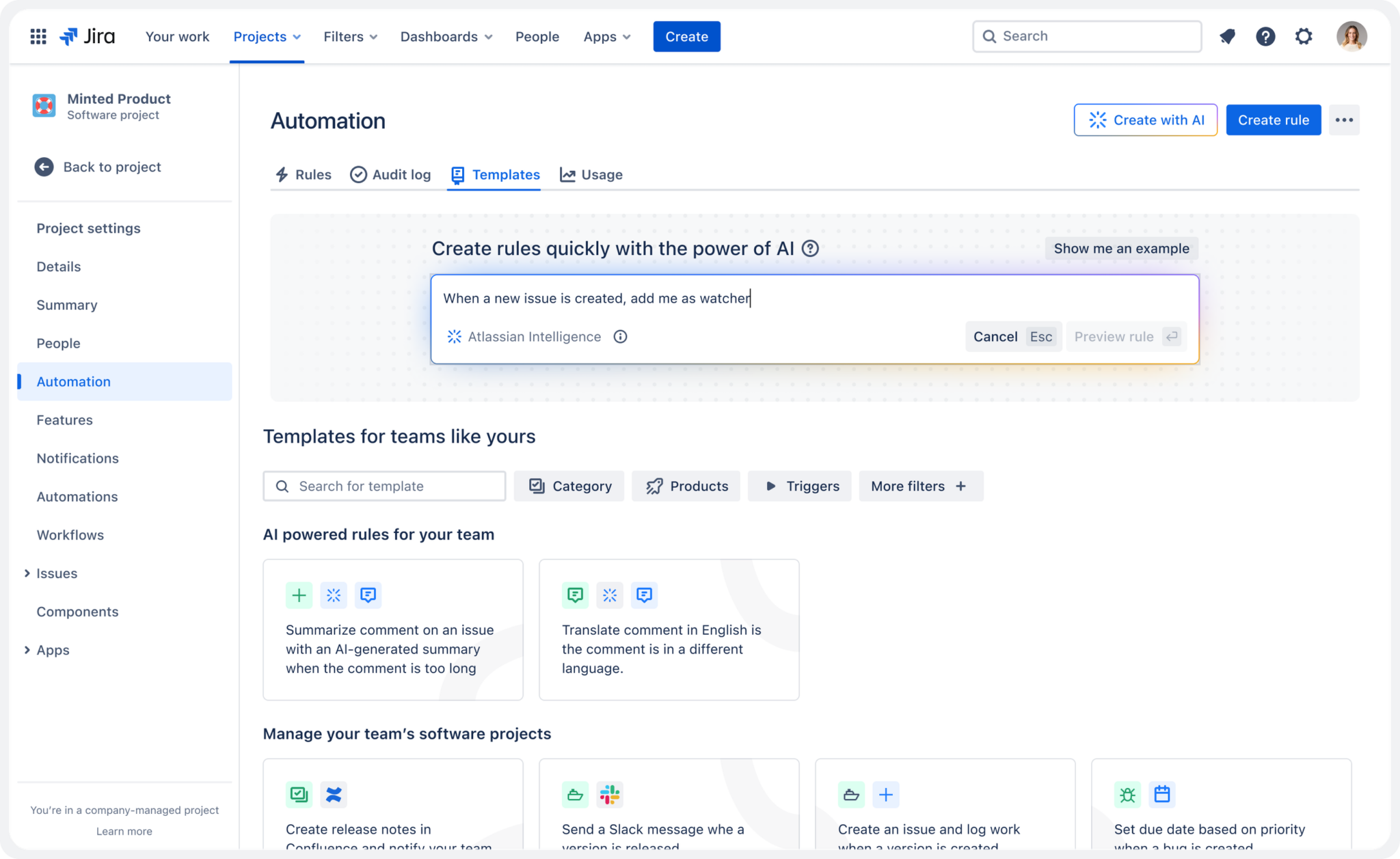25 AI prompts to make product managers’ lives easier
Product managers face many challenges in steering products toward success everyday. Here are a few prompts that can facilitate this process today.
Product managers face many challenges in steering products toward success. From juggling multiple tasks to ensuring alignment across teams, the demands on their time and energy can be overwhelming.
Learning the best AI prompts to streamline product managers’ daily workflows can save time and energy. These prompts are like handy assistants, ready to help with various tasks, from prioritizing feature requests to analyzing feedback. By using AI prompts, product managers can save time, make informed decisions, and drive better outcomes for products and teams.
How to create effective AI prompts
Crafting the best AI prompts fosters collaboration and maximizes productivity within teams. By following key principles and techniques, you can ensure that your prompts fulfill their intended goal while saving time for users. Here are a few tips to help you create the best AI prompts:
- Be clear: Ensure that the prompt clearly communicates the desired action for the task. Use simple language to avoid ambiguity and provide as much detail as possible.
- Use relevant information: Tailor the prompt to provide context or specify any necessary parameters for the task. Include relevant details or instructions to help AI better understand the task.
- Use actionable language: Use verbs to prompt AI to take specific actions. Clearly indicate what actions need to be performed. For instance, use “Analyze customer feedback for sentiment trends” instead of “customer feedback analysis.”
- Keep it concise: The prompt should be concise to avoid overwhelming the program with unnecessary information. Focus on providing the essential information needed for the task.
- Test and iterate: Test the prompt to ensure it provides the desired outcomes. Iterate based on the responses and adjust as needed to improve effectiveness.
Learn more about how Atlassian Intelligence works.
AI prompts for product management teams
With AI prompts, product teams can work smarter and make better decisions. These prompts guide you through tasks, making everything easier. Whether comparing tools, understanding customer feedback, or managing risks, AI prompts help you do it all effortlessly.
Keep in mind that in order for these prompts to provide you with the information you want, you’ll need to provide them with data. Everything from customer feedback to market data and internal metrics is necessary to provide the AI with the necessary data to ensure it can generate meaningful insights and recommendations.
Once you have that data, you can try the following AI prompt ideas to help you get started:
Tool comparisons
Choosing the right tools and software solutions improves product management. AI prompts can help product management teams compare and evaluate different tools effectively by using these AI prompts:
- Compare features and pricing of these tools (provide information about the tools)
- Assess user reviews and ratings (provide customer feedback)
- Compare integration capabilities with existing systems (provide information about the new and existing tools)
Customer feedback analysis
Listening to customer feedback can help you continuously improve products and services. AI prompts can help product management teams analyze and derive insights from customer feedback more efficiently. For example, you can use these AI prompts to:
- Aggregate customer feedback from these sources (provide sources and data)
- Identify common themes and pain points
- Prioritize feature requests based on customer demand

Risks and vulnerabilities
Anticipating and mitigating risks ensures product success and resilience. AI prompts can help identify and address potential risks and vulnerabilities early on. For instance, you can use these prompts to guide teams in proactively managing risks, such as:
- Conduct risk assessment for new product features
- Monitor security vulnerabilities and data privacy concerns
- Improve contingency plans for potential disruptions
Market research and competitor analysis
Understanding the market and what competitors are up to can help you get a competitive edge. With AI, product managers can do this faster and smarter.
- Find the latest trends in the industry
- Analyze what competitors are doing differently
- Identify any gaps in the market where the product could fit
- Summarize customer reviews and feedback to spot what’s missing in the market
- Analyze the social media conversations and online discussions to learn more about the target audience
Product performance monitoring
With AI tools, businesses can significantly enhance the effectiveness of their performance tracking, allowing product managers to identify issues and optimize user experience. Use these tools to:
- Analyze recent user interactions with the product. Are there any trends or anomalies that could indicate performance issues?
- Predict any potential glitches or bugs in the product based on historical data
- Provide insights into which features of the product are underutilized or causing user frustration
Predictive analysis and forecasting
Being able to anticipate future trends and demands can help you satisfy customers and stay ahead of the competition. Predictive analysis and forecasting can give you information about potential market shifts, consumer behavior, and product demand. Try these prompts with your own data:
- Forecast the demand for our product over the next quarter
- Identify upcoming trends in the industry we should be aware of
- Analyze historical sales data and market trends to forecast the product’s performance in different regions
Natural language processing
Natural language processing (NLP) changes the way product managers interact with data and documents. With Atlassian’s natural language rule builder in Confluence and Jira, you can create automations by simply telling the AI what you want it to do, streamline document analysis and summarization, and improve overall decision-making.

For instance, businesses can use natural language to create AI automations that instruct the system on tasks and allow it to create rules autonomously. This means providing AI prompts such as:
- When a new issue is created, assign it to me
- When a task is completed, notify the project manager for review and approval
At the same time, AI tools can automatically summarize lengthy documents and exact the most important parts for decision-makers to review quickly. To make the most out of summarizing with AI, use prompts like:
- Highlight the key features of the product discussed in this document (provide document)
- Identify the main objectives outlined in this project proposal
- Summarize the findings presented in this research paper
Mastering AI prompt writing for product managers
Product managers wear many hats, but mastering AI prompt writing can help you maximize the potential of Atlassian Intelligence and help your teams collaborate and drive efficiency. With the right prompts, product managers can streamline workflows, make informed decisions, and drive better results for your products and teams.
Always ensure your prompts are clear and concise, avoiding ambiguity so the program understands exactly what action is required. Tailor prompts to the specific context of the task. Prioritize prompts based on importance and urgency. By refining your skill of crafting AI prompts, you can empower your product management team to work together more efficiently and achieve greater success.
Atlassian Intelligence helps your team work smarter. With a suite of AI features integrated into Atlassian products like Jira and Confluence, Atlassian Intelligence enhances productivity, streamlines workflows, and provides valuable insights for decision-making within teams and organizations.
Learn more about how Atlassian Intelligence works.

